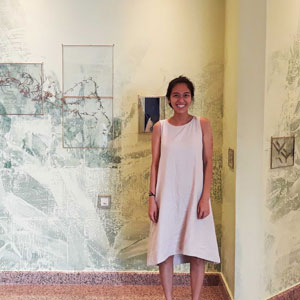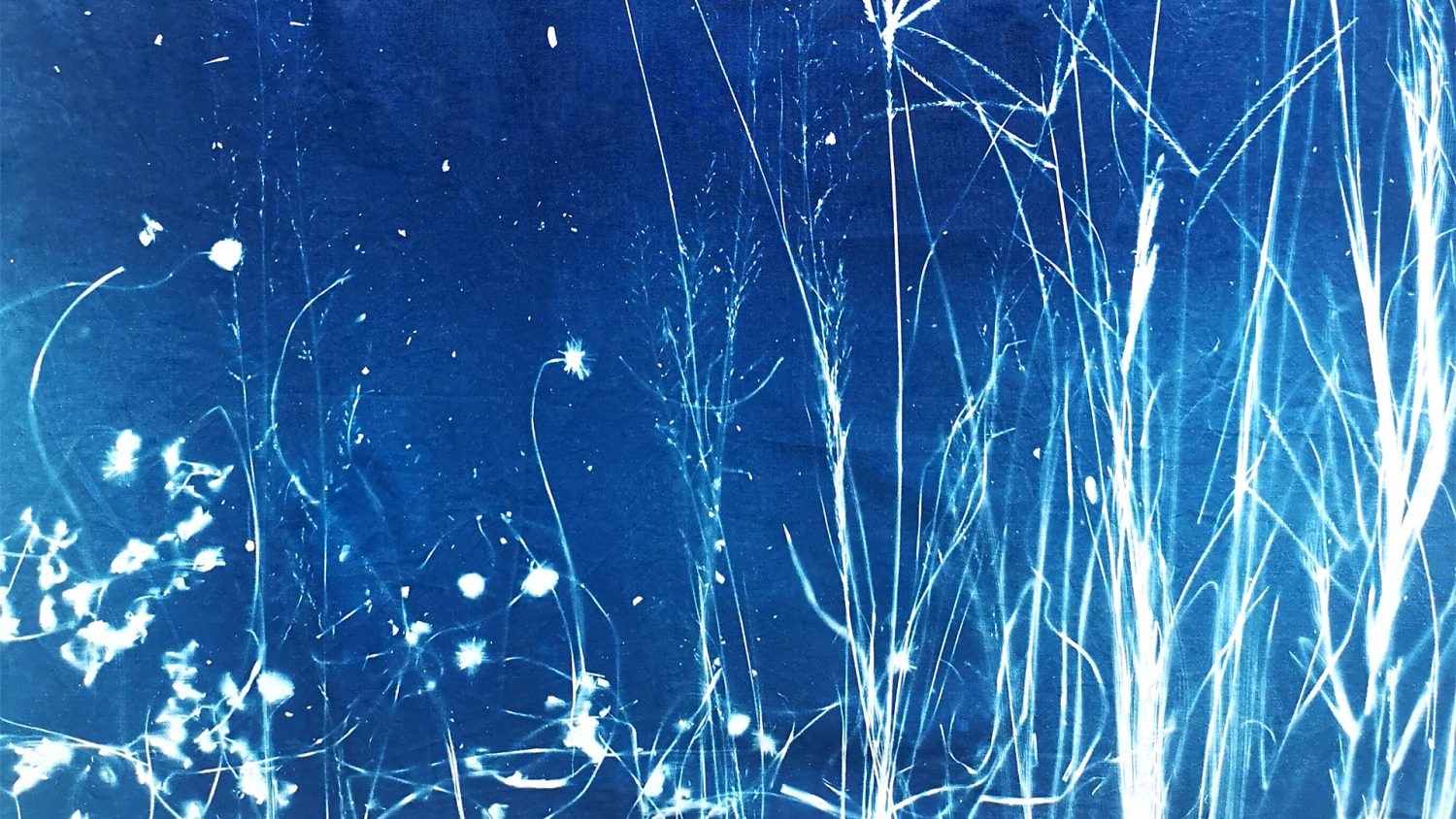Featuring works by Shirly Koh
As part of Site Unseen
Objectifs Store
2 Aug to 24 Jan 2023
Free admission
There’s something quirky about our garden city – on the surface it seems man-made, manufactured and curated, yet if you look a little deeper, you’ll often find a little more wilderness than expected.
While urban planners selectively curate, maintain and build structures to support plant life, artist Shirly Koh feels that this process denies people the opportunity to see what could be if nature could be if left unchecked.
As and when they grow uses cyanotype techniques to document plants in our urban environment that are left to their own devices – wildflowers, flowering grass, trees, cabbages and algae, around the routes that Shirly comes across in her everyday routine. The artwork features hand-cut plants, which often leads to Shirly having to make a decision on whether she should harvest them or to wait a little while more, while considering how they may not be there the next week as they may have been removed by landscapers.
Through this installation, Shirly invites viewers to consider their relationship with nature in this urban environment.
This work is a site-specific installation at the Objectifs store, as a part of Site Unseen — an adapted studio residency programme by Objectifs that invites artists and image makers to create site-specific image-based works for spaces outside of a conventional gallery. Through this, it proposes new ways of encountering everyday spaces that have been overlooked.
Read on for a short interview with Shirly to find out about the process behind her installation, as well as a list of items that she has curated for our store.
- Could you tell us about the inspiration behind As and when they grow?
I have a habit of looking at my surroundings as I travel from one place to another during my daily commute. Throughout the years, I’ve always wondered why more attention isn’t given to this wild beauty? Hence the further investigation in this series.
2. With As and when they grow, as well as your earlier works such as Cow Grass, your works create a space in which often overlooked aspects of nature that people encounter in everyday life are brought to the foreground and celebrated. What gave rise to your interest in this concept?
I spent 2012 in New Zealand on a working holiday trip trimming kiwis and packing apples for half a year. During this period, I would spend the weekend climbing mountains, having picnics by the grass, camping, catching the sunrise, and watching the milky way alongside my other co-workers.
This extended period of time with nature led me to start noticing the difference between the way I see and experience nature in New Zealand as compared to urban Singapore. From then on, I started noticing and questioning the existing relationship between us and nature in urban spaces.
One thought that comes to mind is that – while one can go to destinations such as Singapore Botanical Garden or Bukit Timah Hill for a dose of nature, the closest nature to us is actually the landscaping of the trees and grass that have been planted by our government next to our housing estate. On my daily commute to different places, I will notice the different varieties of grass and wild flowers but rarely see anyone pay attention to it. I often wondered why?
Some of the possible reasons could be the lack of ownership over these spaces which also leads to the lack of care, disconnection and alienation from nature.
However there are always opportunities to forge new connections with nature. I hope that my works can create spaces for the public to experience the wonderment and re-examine their relationships with these spaces whenever they go about their daily commute.
3. You often work with analogue processes in your practice. For this installation, you had worked with both cyanotypes and hand pulled gelatin. Could you share about your interest in analogue processes, and what draws you to these mediums?
I often ask myself these questions too! These analogue processes are challenging to work with as they are very time intensive and sometimes weather sensitive.
I personally enjoy the tactile process of creating things with my hands. The act of coating the paper, preparing the negative and the bath for developing is very stimulating for me as I enter a state of flow. I also find it magical as the prints develop in real time in front of you. Furthermore there is also an element of surprise that always keeps me on my toes.
I find myself revisiting these analogue processes again and again for all the above reasons.
4. Tell us about your artist picks from the store’s offerings
a) When Nothing Happens: Reframing the Everyday by Ang Song Nian, Aik Beng Chia, Heman Chong, Atelier HOKO, John Clang, Kathy Anne Lim, Liu Ying and Robert Zhao Renhui
(This title is currently only available at Objectifs’ physical store)*
I like how there are a variety of images and text re-examining the everyday in different contexts from so many artists whose works I love. There is something magical, absurd yet familiar, and sometimes nostalgic about the images as I go through them — they re-examine the everyday situations around us.
I also like how the book is not bound, but also encased in a card format which allows me to rearrange and display them individually as and when I feel like.
b) Mass Production by Darren Soh
I’m intrigued by how Darren captures the in-between state of places as they go through mass transformation within a short length of time. The book features and documents sites that the public usually have no access to such as the Jurong rock caverns, tunnelling work at Downtown Line and construction of the Singapore Hub and Gardens By The Bay. I enjoy the juxtaposition of these images with the nostalgic and familiar iconic buildings of the Singapore public housing complexes.
c) Suddenly the Grass Became Greener by Kevin WY Lee
This is a book that documents the passing of Lee Kuan Yew and how he has shaped the garden city. This is done through a series of photographs collected by the author with essays and input from numerous parties. I feel that the relationship between the urban spaces and the greenery around us also have been uniquely and thoughtfully captured in series – especially the one between the trees and its pruners.
d) Artist As Collector by Comma Space 逗号空间
This book features 50 stories of how an artist comes to collect the works of other fellow artists. Each story is unique and diverse, it is very different from collecting art as a form of investment. Instead, this book offers insight and access to a lot of memories and understanding toward the personal relationship each artist has toward one another in their art journey. This book is a catalogue of a group exhibition that was curated by Dr. Wang Ruobing and presented at Gillman Barracks in 2021 by Comma Space 逗号空间.
e) Stroll on the Island by Ray Lim
I love how this book looks fun, just from the cover itself, which is made with an untrimmed polka dotted fabric. There is also a circular die-cut in the middle of the cover, allowing one to take a peek inside the book. The book features daily shots of day-to-day life in Taiwan. The images feel rhythmic, with dynamic movement and pauses that punctuate the city street life.The colours are also pastel toned and dreamy, bringing me to another dimension as I flip through the book.
About the artist

She graduated from LASALLE College of the Arts with a Bachelor Degree in Fine Art (Honours). She was the recipient of the Chan Davies Art Prize 2016, UOB Painting of the Year 2016 – Emerging Artist – Silver, NOISE Singapore Award 2015 and LASALLE Future Leader Scholarship in 2013. She was recently part of 2022 Meta (Facebook) Open Art Commission.
About Site Unseen
Site Unseen is a programme by Objectifs that invites artists and image makers to create site-specific image-based works for spaces outside of a conventional gallery. Through this, it proposes new ways of encountering everyday spaces that have been overlooked.

